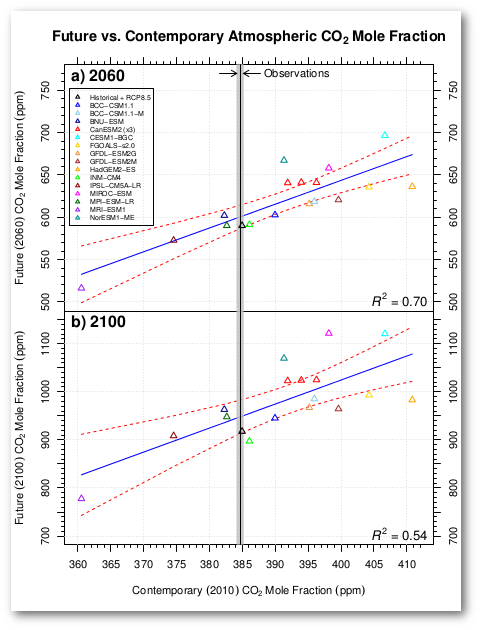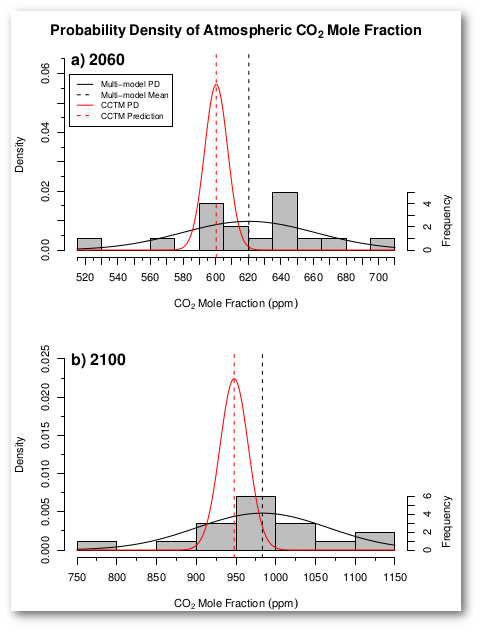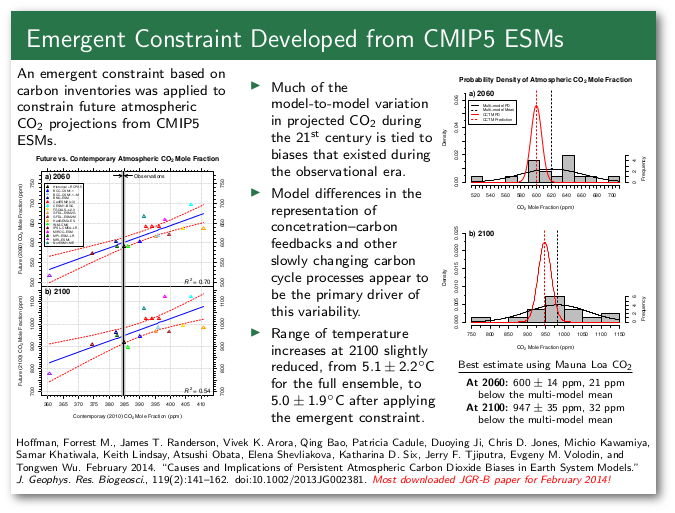Research Highlights
Causes and Implications of Persistent Atmospheric CO2 Biases in ESMs
February 14, 2014
An emergent constraint based on carbon inventories was applied to constrain future atmsopheric CO2 projections from CMIP5 ESMs.
|
- Much of the model-to-model variation in projected CO2 during the 21st century is tied to biases that existed during the observational era.
- Model differences in the representation of concetration–carbon feedbacks and other slowly changing carbon cycle processes appear to be the primary driver of this variability.
- Range of temperature increases at 2100 slightly reduced, from 5.1 ± 2.2°C for the full ensemble, to 5.0 ± 1.9°C after applying the emergent constraint.
|
Best estimate using Mauna Loa CO2
At 2060: 600 ± 14 ppm, 21 ppm below the multi-model mean
At 2100: 947 ± 35 ppm, 32 ppm below the multi-model mean
Hoffman, Forrest M., James T. Randerson, Vivek K. Arora, Qing Bao, Patricia Cadule, Duoying Ji, Chris D. Jones, Michio Kawamiya, Samar Khatiwala, Keith Lindsay, Atsushi Obata, Elena Shevliakova, Katharina D. Six, Jerry F. Tjiputra, Evgeny M. Volodin, and Tongwen Wu. February 14, 2014. “Causes and Implications of Persistent Atmospheric Carbon Dioxide Biases in Earth System Models.” J. Geophys. Res. Biogeosci., 119(2):141–162. doi:10.1002/2013JG002381.
Most downloaded JGR-B paper for February 2014!


